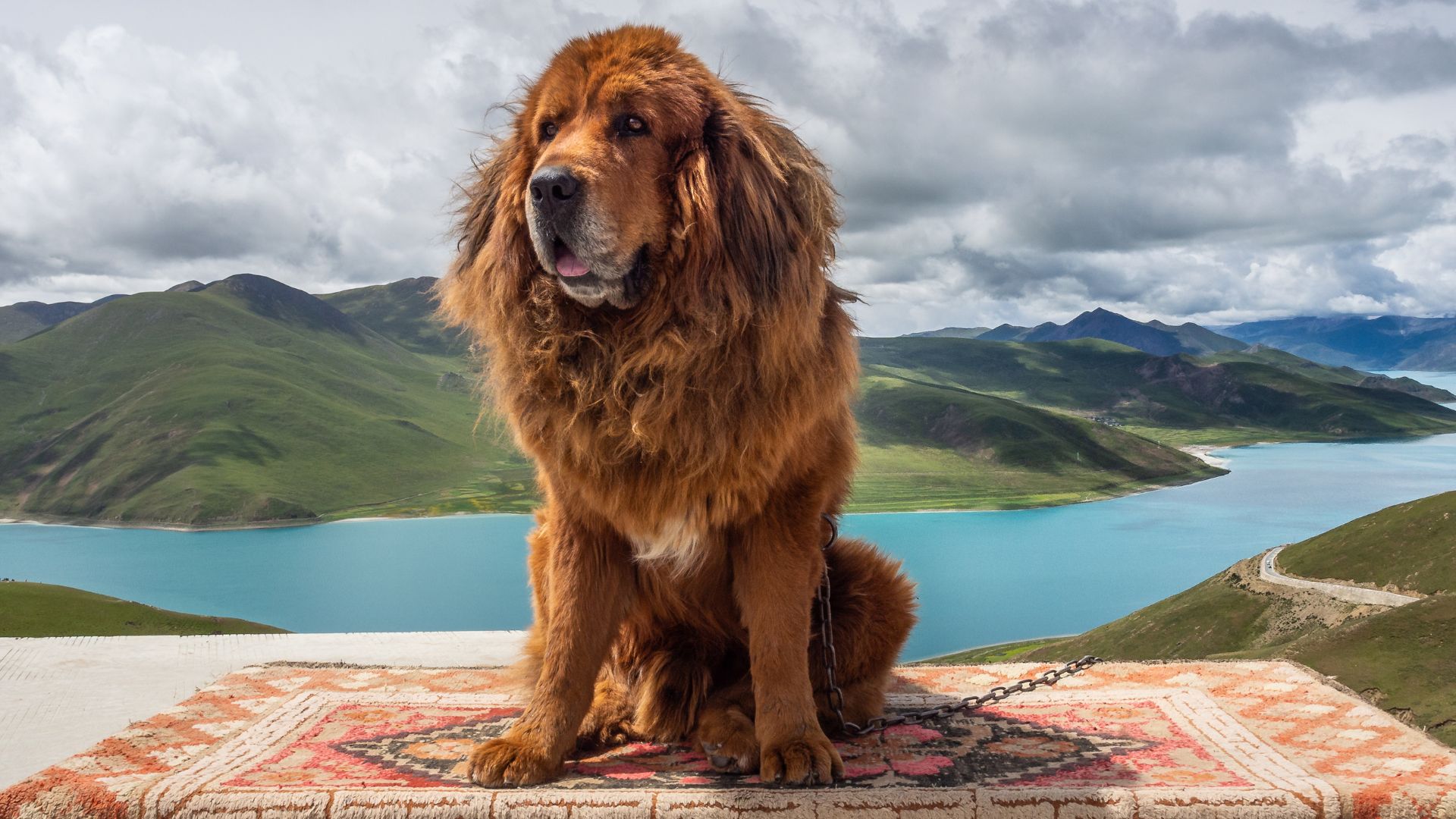Throughout history, dogs have played more than just fetch—they’ve played divine roles in cultures around the world. From guardians of the underworld to spiritual protectors, certain dog breeds have been seen as sacred, mystical, or even godlike. These are not just good boys—they’re holy boys.
In ancient Egypt, the Anubis-like dogs stood guard over tombs. In Tibet, Lhasa Apsos were believed to house the souls of monks. And in Japan, the Shiba Inu isn’t just a meme—it’s a national treasure with deep cultural roots.
These breeds didn’t just show up for belly rubs—they showed up in myths, legends, temples, and ceremonies. Revered for their loyalty, courage, and spiritual symbolism, they often held a higher status than some humans!
In this cultural deep dive, we’re celebrating the dog breeds that go beyond companionship and into the realm of the sacred. Whether they were seen as messengers from the gods or guardians of souls, these canines have left paw prints not just in history, but in the very hearts of ancient belief systems.
Prepare to be amazed—and maybe a little humbled—by the dogs that were literally worshipped.
Dog Breeds Sacred To Cultures
1. Tibetan Mastiff

Meet the Tibetan Mastiff: a towering powerhouse with the heart and history of a legend. These majestic giants weren’t just dogs—they were the ultimate temple guardians of the Himalayas, bred by monks to protect sacred monasteries from anything spooky or uninvited.
They’re classified as a giant dog breed, typically weighing between 70 to 150 pounds. These impressive dogs have a powerful, muscular build, a broad and massive head, deeply set eyes, a square-shaped muzzle, and an alert, commanding presence.
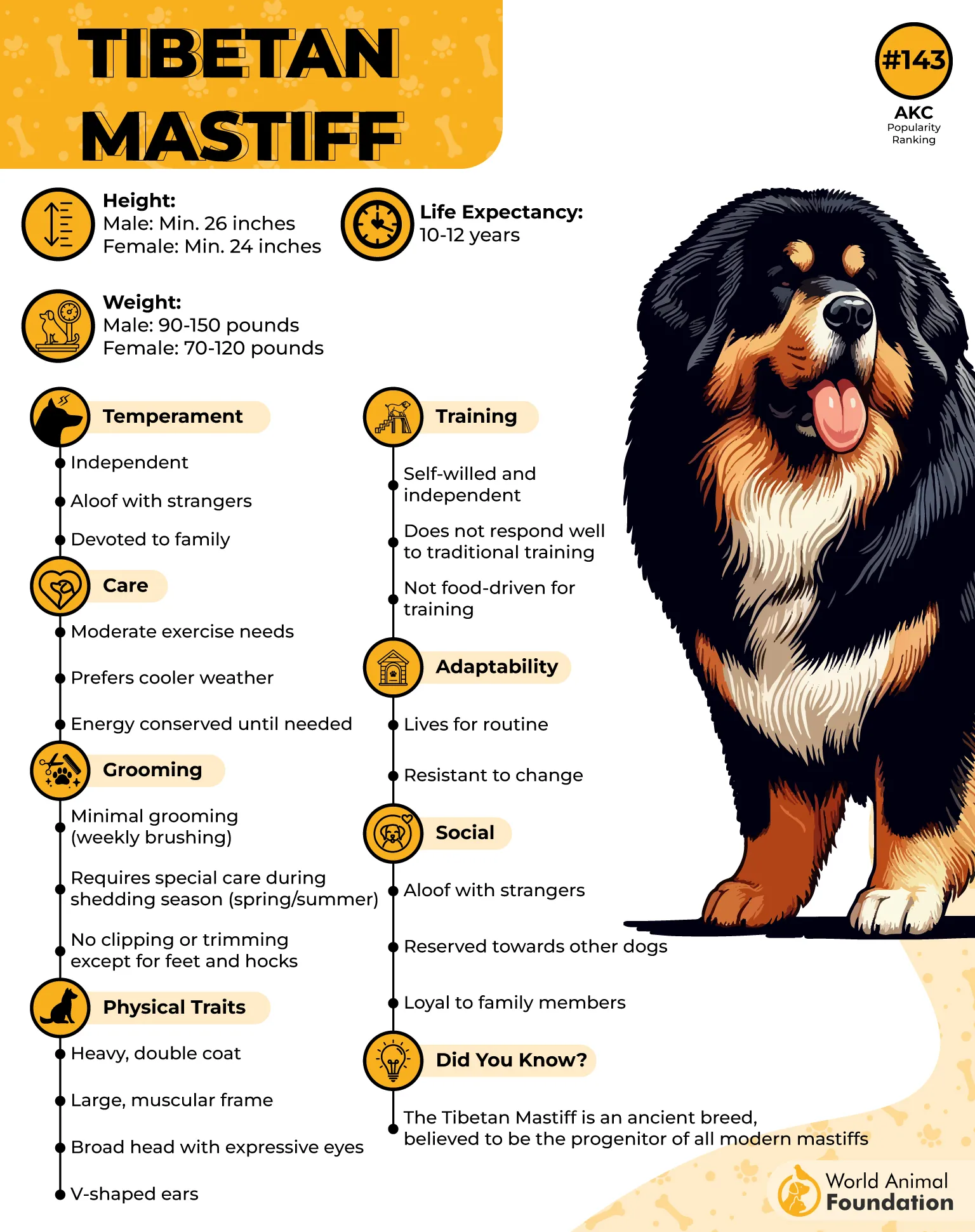
Their feathered tail, often curled up over their back, adds to their majestic and imposing look. With a presence that commands respect and a coat thick enough to brave the harshest mountain chills, Tibetan Mastiffs were believed to have divine powers.
Locals trusted them to keep evil spirits at bay and maintain the spiritual balance of their lands. Imagine having a four-legged bodyguard with serious mystical clout!
Why Tibetan Mastiffs Are Sacred and Seriously Impressive:
Ancient temple protectors with a divine reputation
Massive size and strength paired with fierce loyalty
Guardians of spiritual harmony in the Himalayan culture
Tibetan Mastiffs may seem like gentle giants indoors—often snoozing much of the day—but don’t be fooled; they tend to become more active and alert at night, staying true to their guardian instincts. While generally quiet, they won’t hesitate to bark if something feels off, making them excellent watchdogs.
These dogs are not well-suited for apartment living. They thrive best in homes with a securely fenced yard, where they can patrol their territory without the risk of wandering off.
With their naturally aloof yet observant temperament, Tibetan Mastiffs form deep bonds with their families and can be incredibly loyal and protective companions.
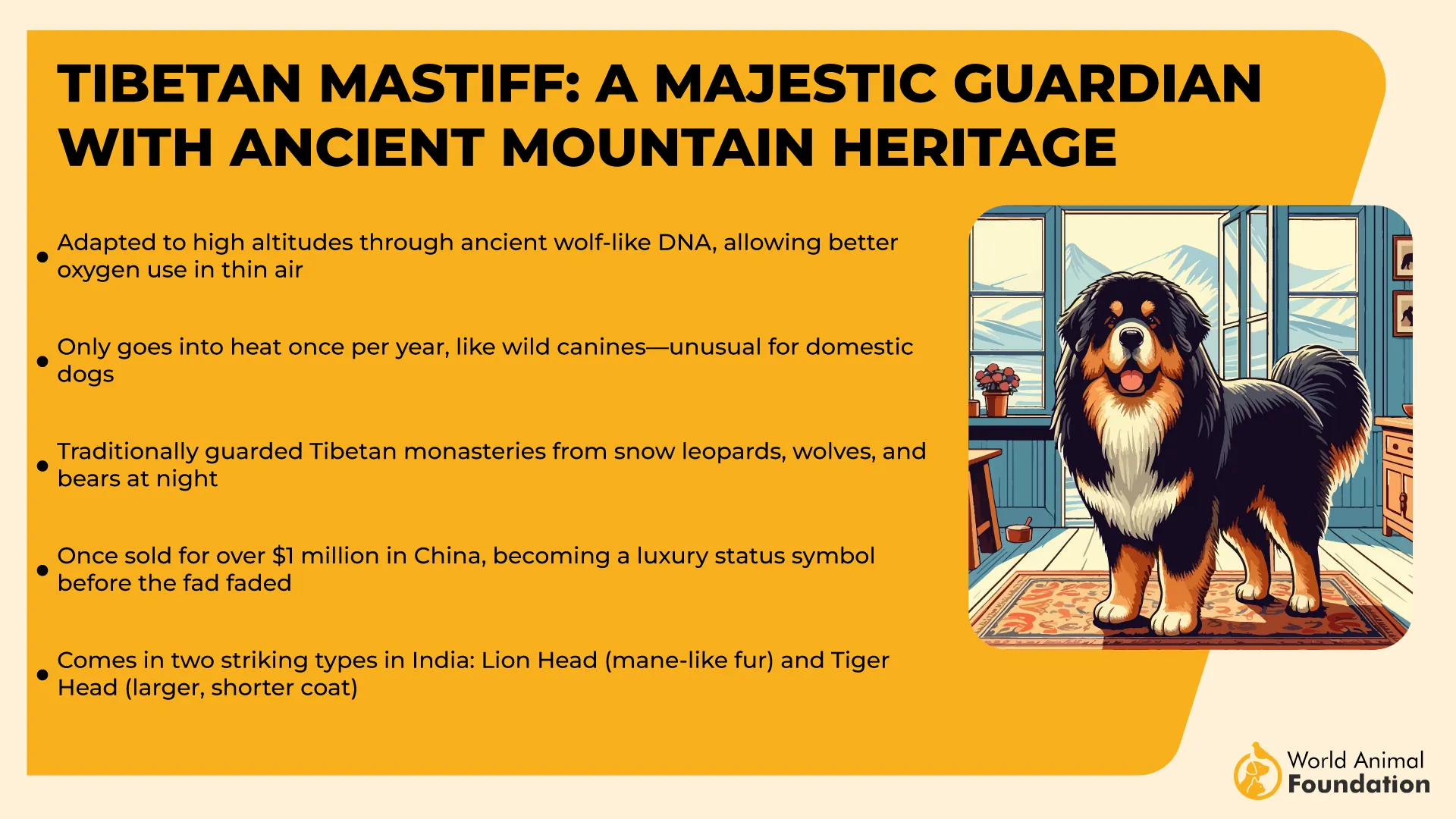
Heads up: These dogs are no casual pets—they need experienced owners who can handle their powerful presence and independent spirit. But if you’re ready for a noble companion with a legendary past, the Tibetan Mastiff’s your mountain guardian.
2. Pharaoh Hound
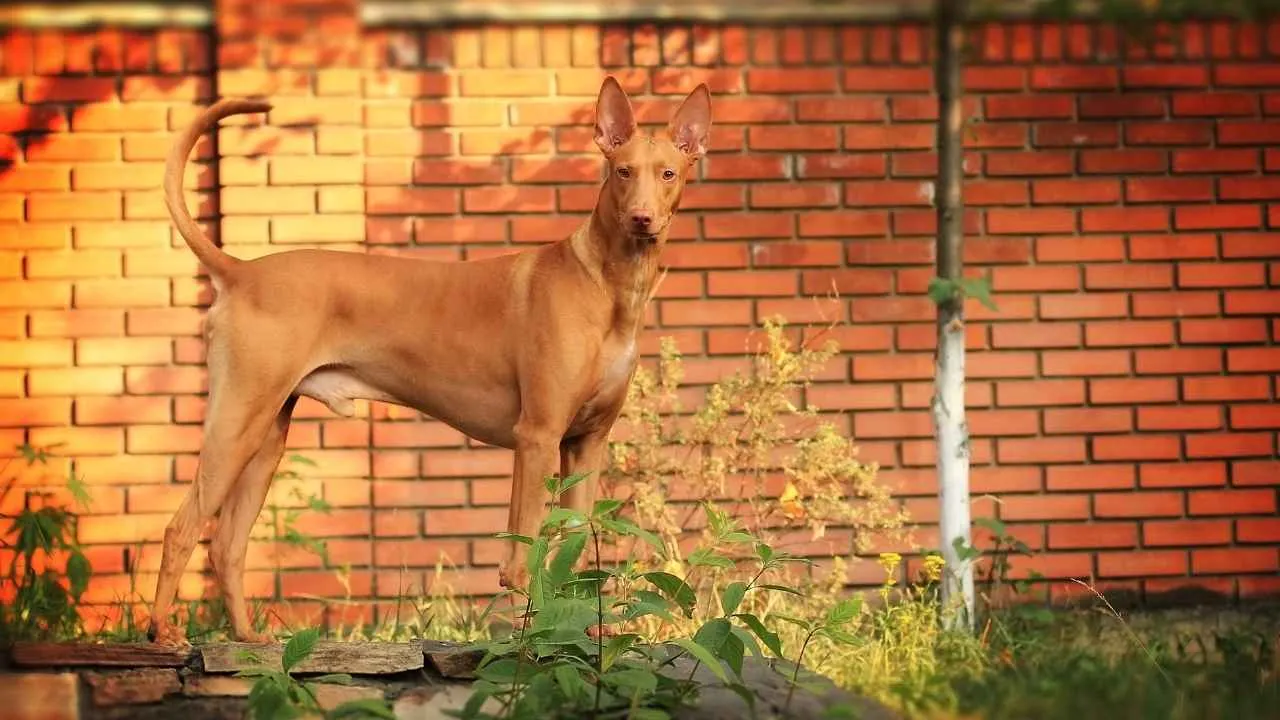
The Pharaoh Hound isn’t just a striking dog with a regal posture — it’s a living connection to ancient Egypt’s sun-drenched deserts and royal courts.
Often mistaken for an Egyptian breed (though actually from Malta), the Pharaoh Hound carries the spirit of those mystical lands with its graceful form and radiant amber eyes.
The Pharaoh Hound is a striking, medium-sized breed standing 21–25 inches tall and weighing between 45–55 pounds. With their elegant build, long legs, sleek tan to golden-red coat, and large, upright ears, they have a statuesque, almost regal appearance that’s hard to miss.
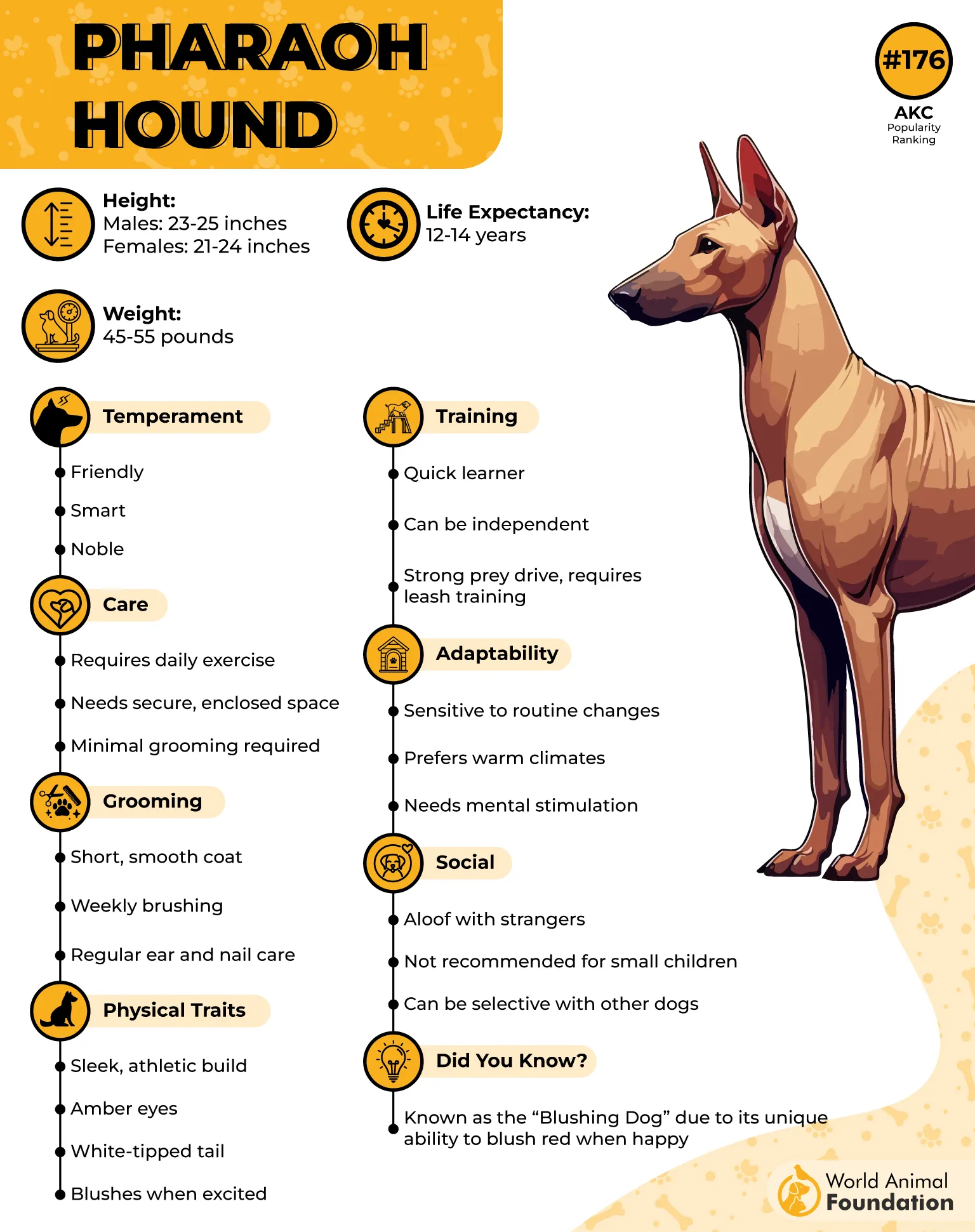
In ancient times, dogs that looked like Pharaohs were revered as sacred companions, symbols of protection and guidance. Their alertness and speed made them perfect hunters and guardians, believed to bring good fortune to those lucky enough to have them around.
With a playful “smile” that seems almost too perfect, the Pharaoh Hound combines elegance and loyalty, like a little piece of Egyptian history trotting right into your home.
Why Pharaoh Hounds Are Sacred and Stylish:
Echoes of ancient Egyptian nobility in their regal looks and alert nature
Believed to bring protection and good fortune
Athletic, intelligent, and endlessly charming companions
Purina says, unlike many other sighthounds, Pharaoh Hounds are more vocal and enjoy being social—they thrive on human interaction and usually get along well with other dogs. Bred for independence, they can sometimes be a bit headstrong, so training requires patience and consistency.
However, their intelligence and eagerness to please make them responsive to positive reinforcement. With the right approach, Pharaoh Hounds become affectionate, loyal, and entertaining companions.
Heads up: These dogs love to run and play, but also adore human company. They’re the kind of dog who’ll brighten your day with that iconic smile.
3. Akita
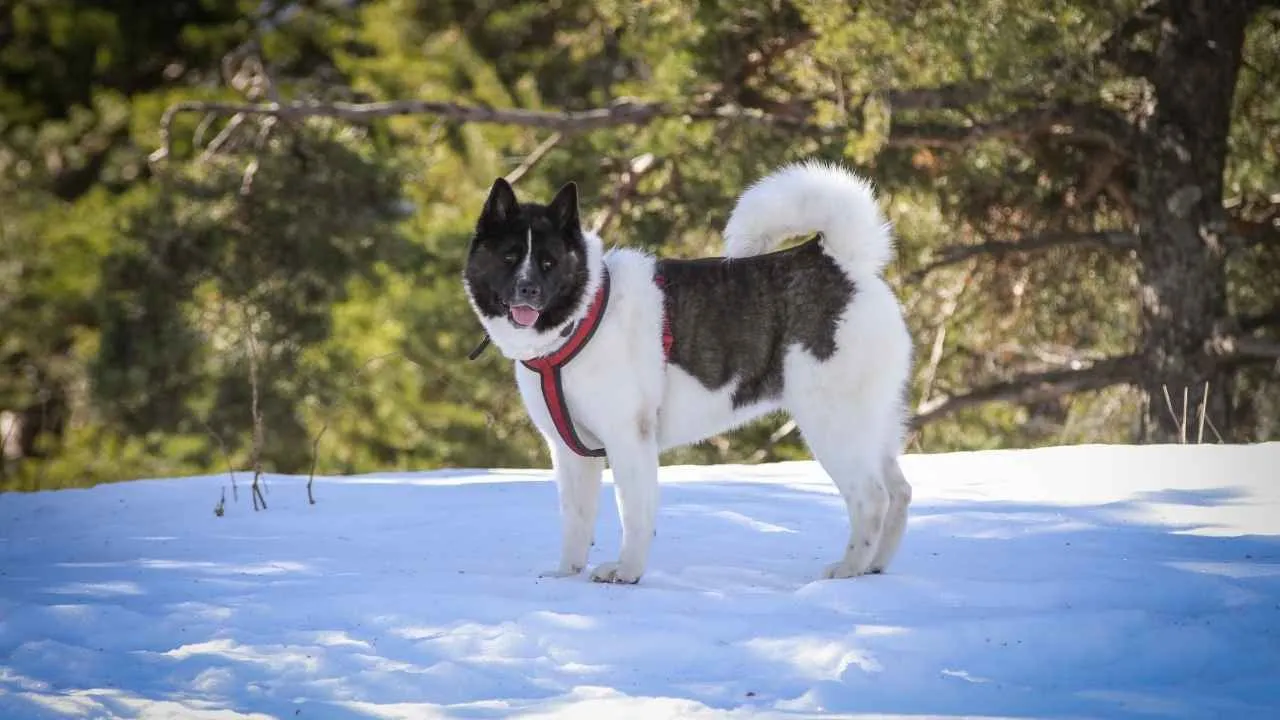
The Akita is more than just a big, fluffy dog — it’s a symbol deeply woven into Japanese culture, embodying loyalty, protection, and spiritual purity. Though not directly linked to any specific deity, Akitas were once considered so sacred that only the nobility and imperial families were allowed to own them.
In Japan, it’s a cherished tradition to gift families a statue of an Akita dog to symbolize health, happiness, and protection, especially when a new baby is born or when someone is ill.
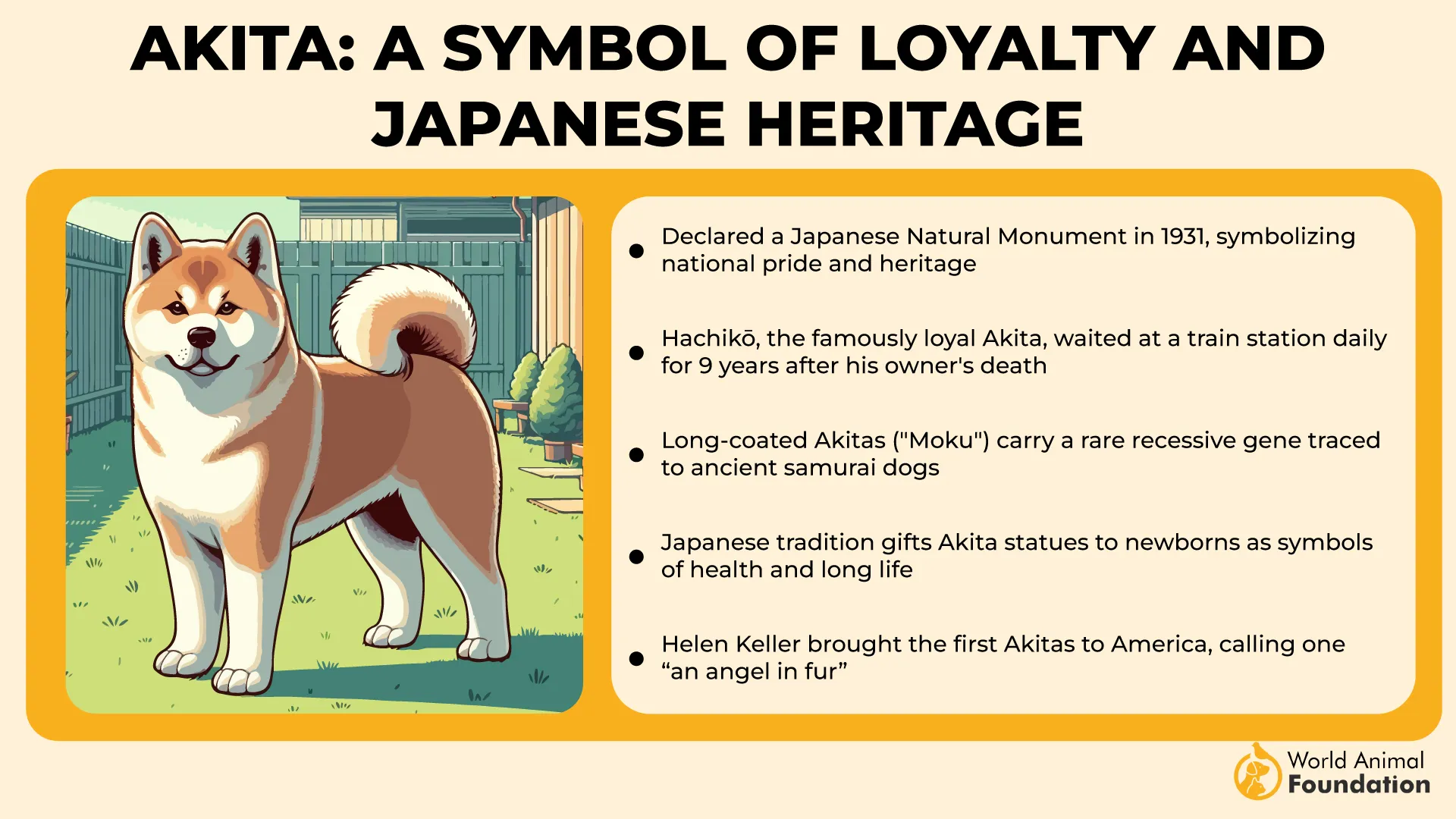
These majestic dogs were guardians, companions, and even national treasures, revered for their calm strength and unwavering devotion. The story of Hachiko, the famously loyal Akita who waited for his owner every day for years, shows just how deeply this breed’s loyalty runs, as noted by PetMD.

Akitas share a striking resemblance to their smaller cousins, the Shiba Inu, with their foxlike faces, triangle-shaped ears, thick double coats, and those signature fluffy tails that curl over the back.
But while Shibas are petite at around 20 pounds, Akitas are a much larger and more powerful breed, weighing between 70 to 130 pounds and standing 24 to 28 inches tall.
Why Akitas Are Sacred and Seriously Loyal:
Historically reserved for Japanese nobility and imperial families
Represent loyalty, protection, and spiritual strength
Calm, dignified, and fiercely devoted companions
Akitas are known for their independence and dignified demeanor. They form deep, loyal bonds with their families but can be reserved—or even wary—around unfamiliar people.
Early socialization and consistent training are key to helping them feel comfortable and confident in a variety of situations. Despite their calm presence, they’re protective and courageous when it comes to those they love.
Heads up: Akitas need consistent training and socialization to balance their protective instincts. If you want a dog with a proud heritage and a heart of gold, this noble breed’s got you covered.
4. Saluki
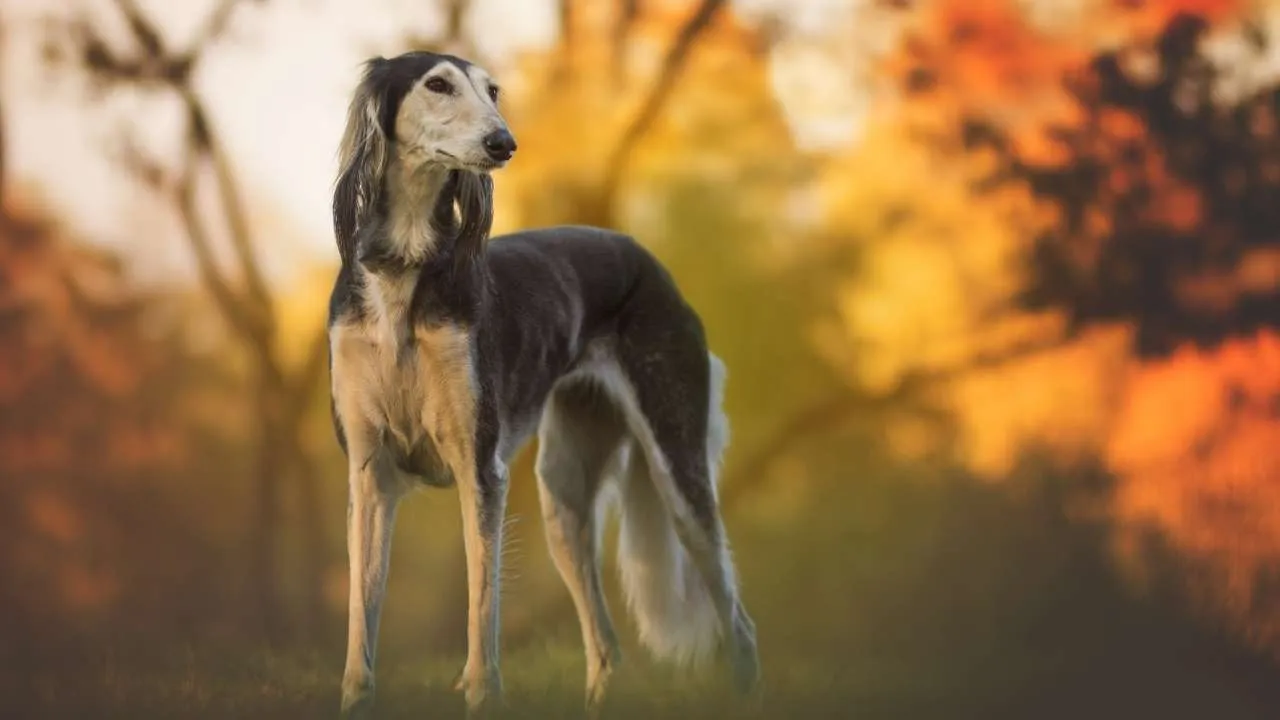
Meet the Saluki, often called the “Royal Dog of Egypt” — and for good reason. These elegant, swift hounds weren’t just admired for their breathtaking speed and graceful looks; they were considered sacred gifts sent from the gods themselves.
Salukis, with their graceful, exotic looks and elegant build, are among the most admired—and expensive—dog breeds in the world. A Saluki puppy can cost anywhere from $3,000 to $10,000, making them a serious investment for dedicated dog lovers.
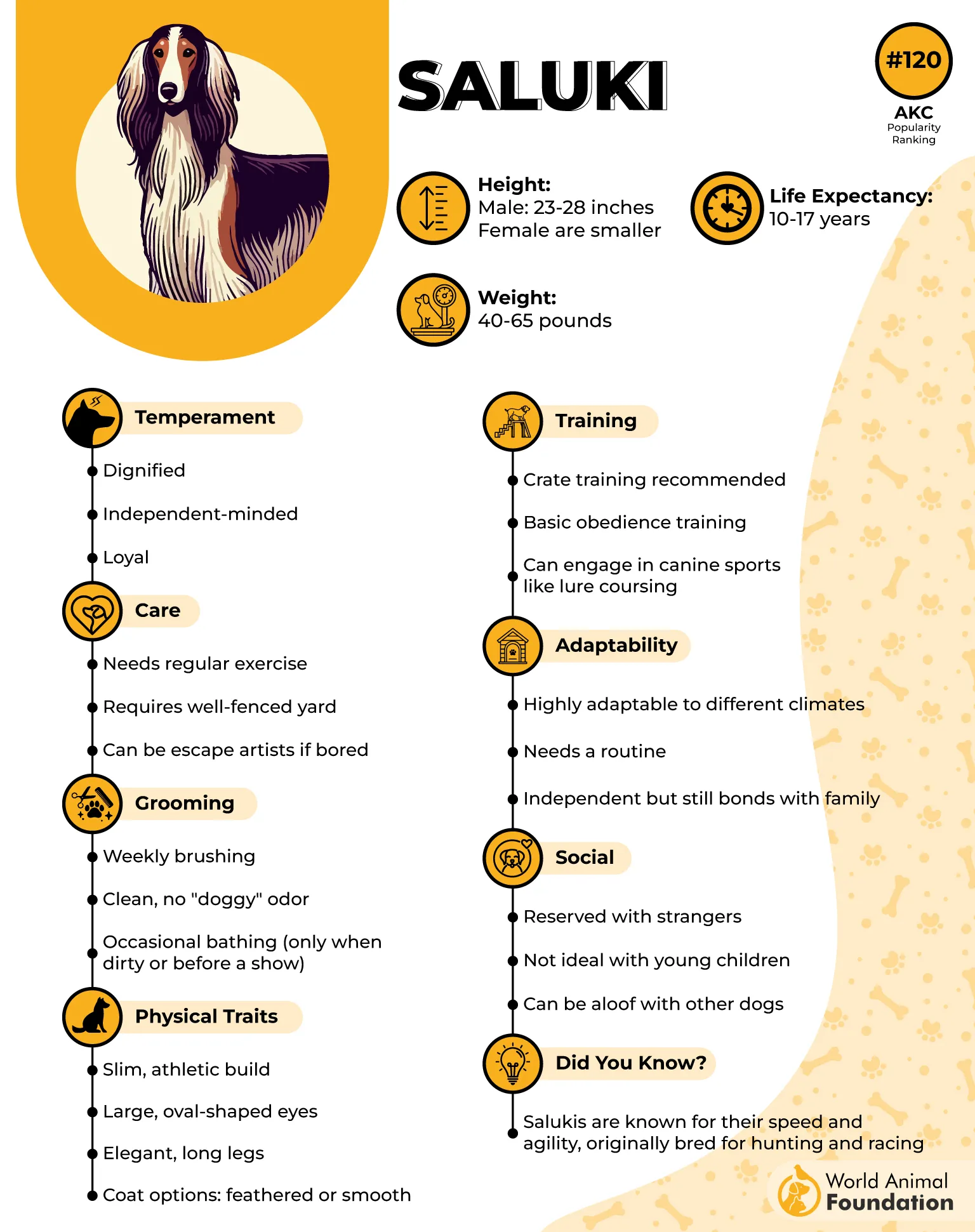
In ancient Egyptian culture, Salukis had a divine association with Anubis, the jackal-headed god who watched over the afterlife. These dogs were more than pets — they were spiritual guides believed to escort souls safely into the next world.
So serious was their role that Salukis were often mummified and buried alongside pharaohs, honored as noble companions on the journey beyond. With their slender frames and silky coats, Salukis embody both beauty and ancient mystery — the kind of dog that makes you feel like you’ve just stepped into a temple or a hieroglyphic storybook.
Why Salukis Are Sacred and Seriously Regal:
Revered as divine gifts, linked to Anubis, guardian of the afterlife
Mummified and buried with pharaohs as spiritual guides
Graceful, swift, and timelessly elegant — the original royal runners
While they aren’t naturally aggressive and don’t make great guard dogs, Salukis do have a watchful eye and will often alert their owners to unfamiliar visitors. They tend to be reserved with strangers but form close, affectionate bonds with their families.
Salukis are spirited and highly independent, traits that stem from their background as desert hunters. This means they aren’t the easiest dogs for first-time owners.
However, their athleticism makes them excellent competitors in agility, lure coursing, and sometimes even obedience and tracking sports—provided their training is patient and positive. For the right owner, a Saluki can be a regal, graceful, and endlessly fascinating companion.
Heads up: Salukis are bred for speed and endurance, so they need plenty of room to stretch those legs. But when they’re off the track, they’re gentle and affectionate — true nobles of the dog world.
5. Xoloitzcuintli
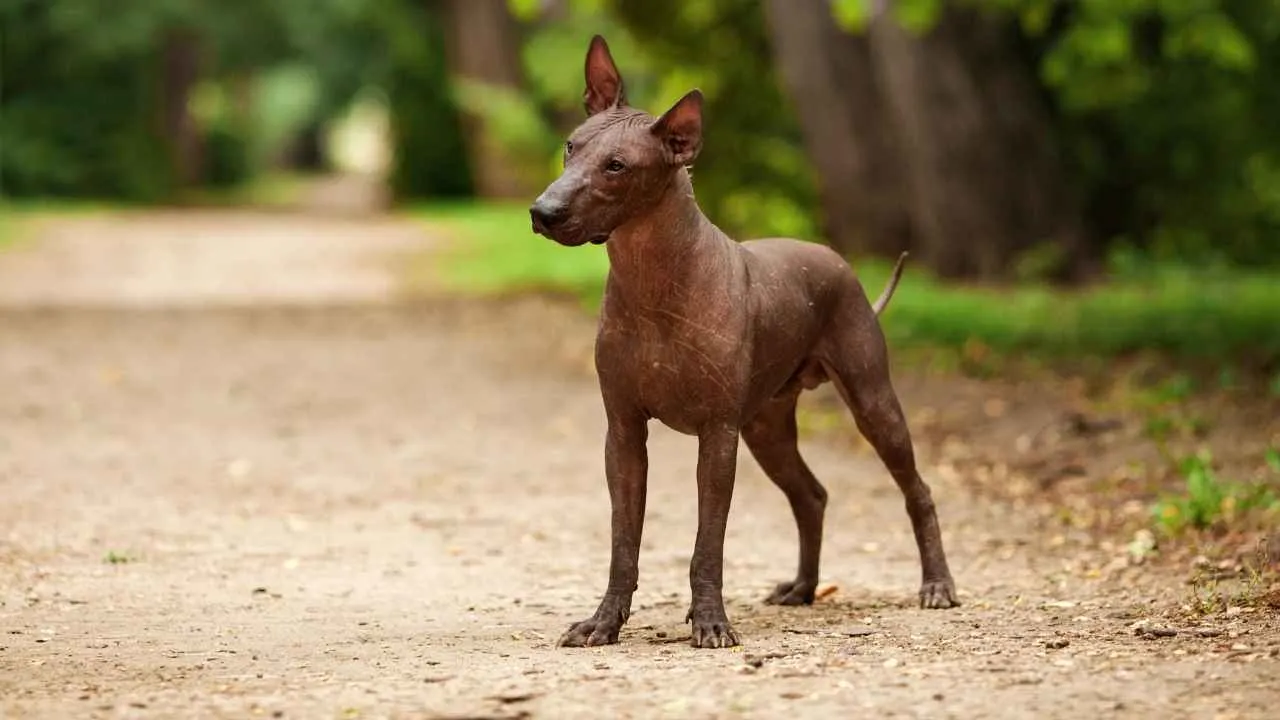
Say hello to the Xoloitzcuintli, or just “Xolo” if you’re in a hurry. This isn’t your average dog — in ancient Mesoamerican cultures like the Aztecs, Maya, and Toltecs, the Xolo was a revered spiritual guide with a job straight out of mythology: escorting souls safely through the underworld. Think of them as the original supernatural Uber drivers.
Named after Xolotl, the Aztec god of lightning and death, these hairless dogs had a serious sacred status. They were so important, many were buried alongside their owners to help guide their journey into the afterlife. Talk about loyalty that goes beyond this lifetime.

With their unique, almost alien-like appearance—hairless skin, big ears, and a sleek silhouette—Xolos don’t just look cool; they carry a mystical aura that’s been building for thousands of years. If reincarnation is real, every Xolo is probably on its seventh spiritual promotion by now.
Thanks to their tropical origins, Xolos are not built for colder or harsh outdoor environments. They’re best suited to indoor living, where their sensitive skin and temperature needs can be properly managed.
Why Xolos Are Sacred and Seriously Mystical:
Spiritual guides in ancient Mesoamerican cultures, entrusted with escorting souls
Associated with powerful gods and revered in burial rituals
Hairless and unique appearance that sets them apart from every other breed
Bred through natural selection over thousands of years, the Xolo has remained relatively free of the structural and health issues that often affect breeds more heavily shaped by human intervention. With their ancient lineage and striking looks, Xolos are both resilient and uniquely captivating companions.
Heads up: Despite their otherworldly look, Xolos are loving, loyal companions, and surprisingly warm (literally — that hairless skin loves a good sunny spot). They’re the perfect blend of ancient mystery and modern charm.
6. Basenji

Meet the Basenji, the original “barkless dog” and a living piece of ancient African—and especially Egyptian—history.
These sleek, elegant pups weren’t just pets; they were spiritual symbols, often immortalized in tomb carvings and artwork alongside pharaohs. Talk about having some serious street (or temple) cred!
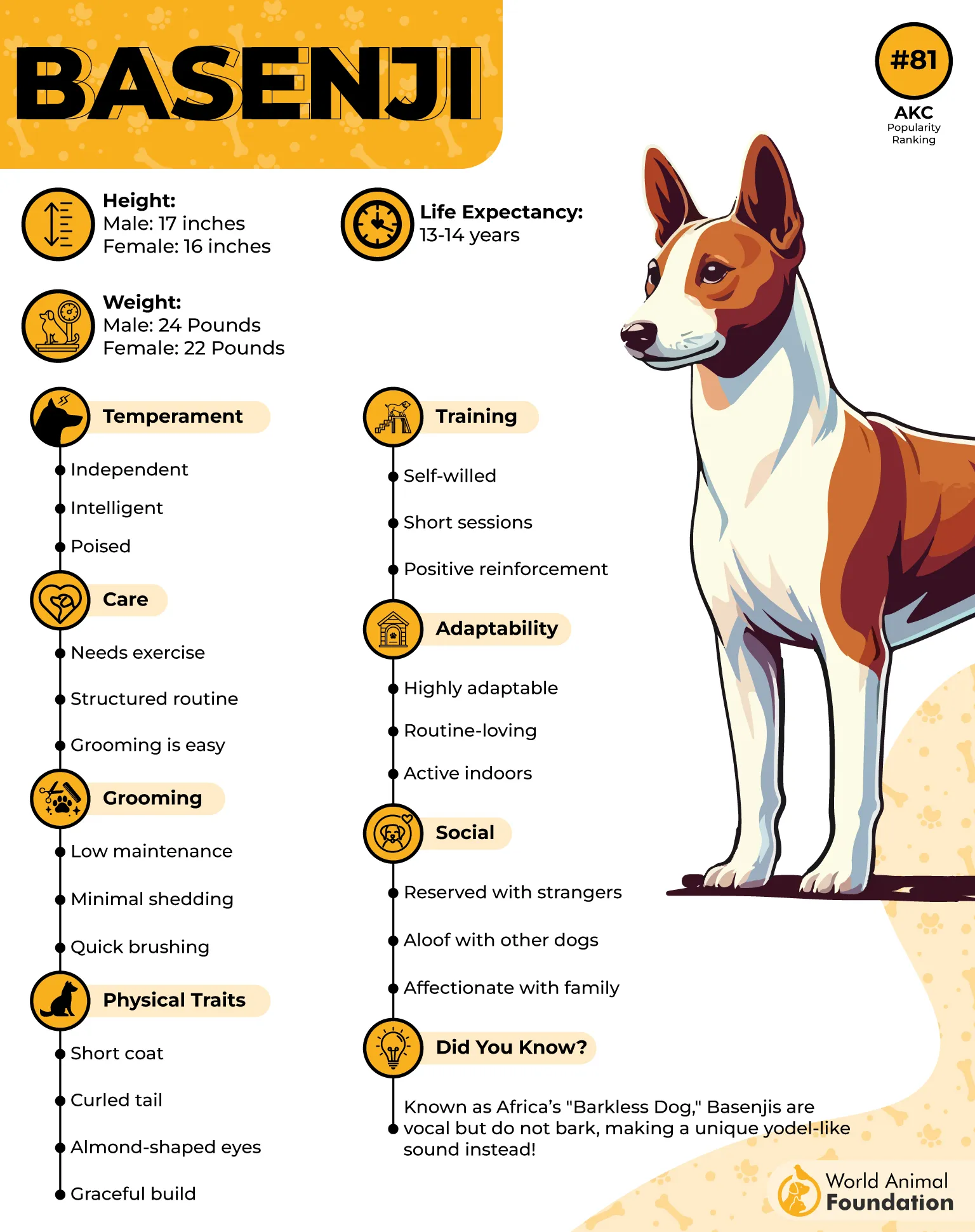
In ancient times, Basenjis were revered for their grace, hunting skills, and protective instincts. Instead of barking like most dogs, they communicate with quirky yodels and chortles — like they’re saying, “I’m here, but let’s keep it classy.” It’s like having a dog who’s mastered the art of subtlety.
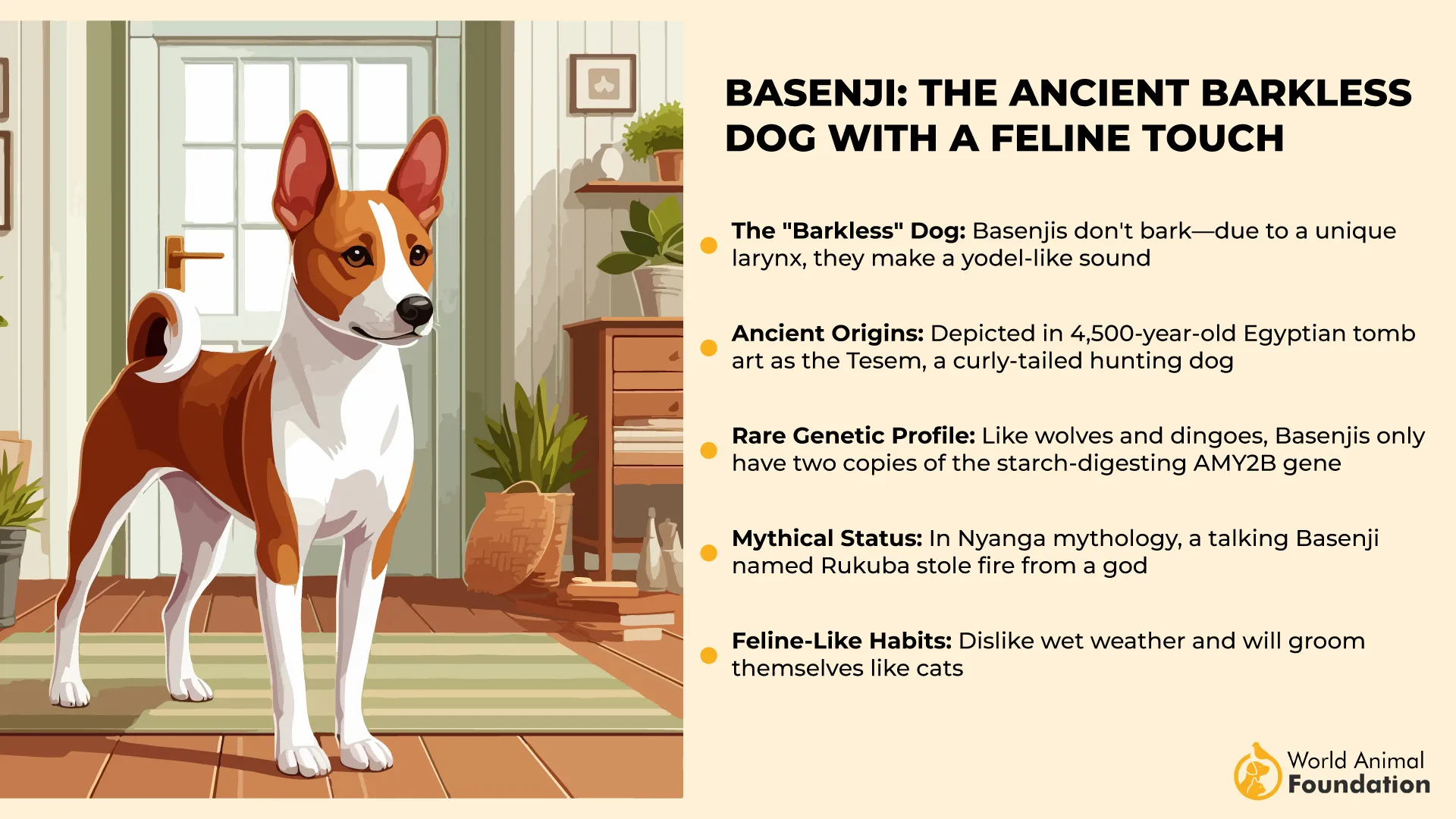
Basenjis have elegant, compact builds that reflect their agility and athleticism. With moderate chests and long, straight legs ending in neat, rounded feet, they move with a smooth, effortless gait.
Their erect ears sit forward on their heads, giving them an alert, curious expression, while the wrinkled forehead adds to their expressive charm. One of their most distinctive features is their tightly curled tail, which sits high on the hindquarters like a little spiral.
Why Basenjis Are Sacred and Seriously Cool:
Revered in ancient Egypt as symbols of protection and grace
Unique “barkless” communication with adorable yodels
Sleek, smart, and full of personality that’s anything but quiet
With a personality as distinctive as their vocal style, Basenjis combine elegance and intelligence with a curious, alert nature that makes them perfect companions and guardians. They’re basically the ancient world’s version of a ninja — silent but deadly… well, mostly just silent.
Heads up: Basenjis groom themselves like cats, so they’re practically low-maintenance fur-wise. But don’t let that fool you — they need plenty of mental and physical exercise to stay happy and healthy.
7. Lhasa Apso
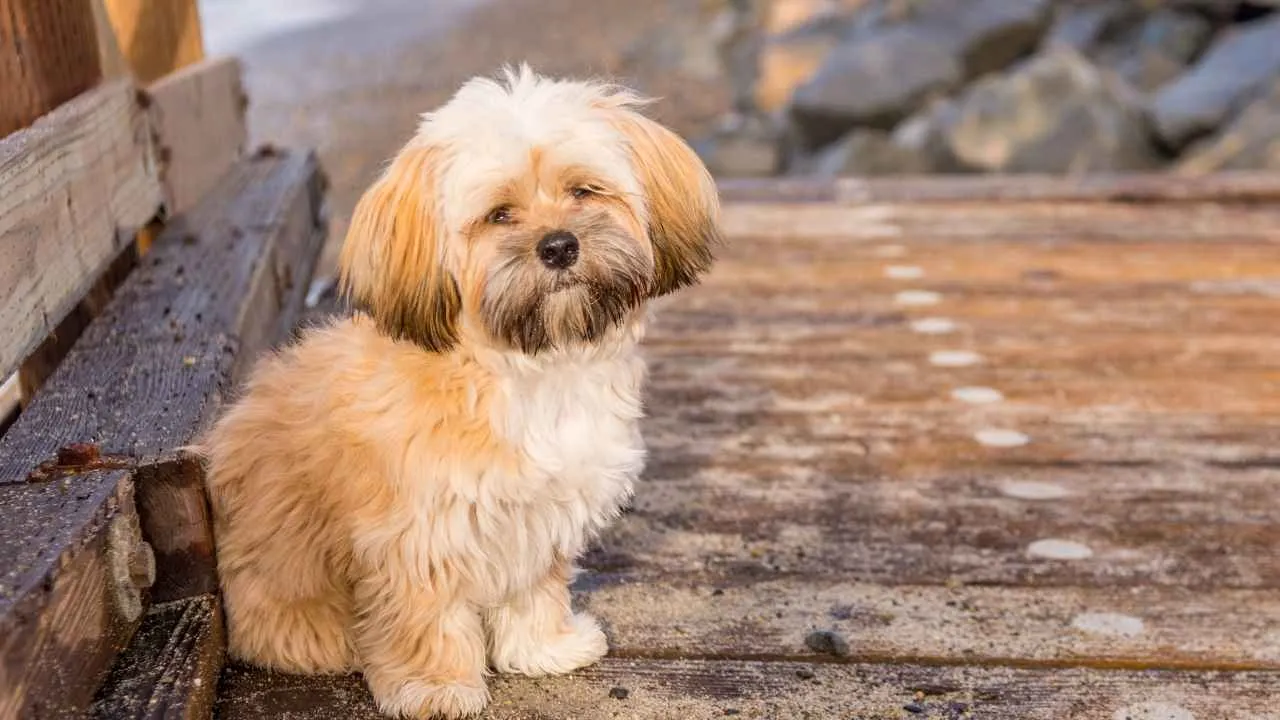
If ancient monasteries had a mascot, the Lhasa Apso would be front and center, sitting proudly on a prayer rug and keeping an eye on things. This small but mighty dog hails from Tibet, where it wasn’t just a pet—it was a sacred guardian, believed to protect temples and monks from evil spirits. Talk about a spiritual bodyguard!
Lhasa Apsos have a rich history as both cherished companions and vigilant watchdogs in Tibetan monasteries, where they were highly valued and often given as honored gifts. Bred to alert monks of intruders, these small but spirited dogs were known for their keen senses and loyalty.
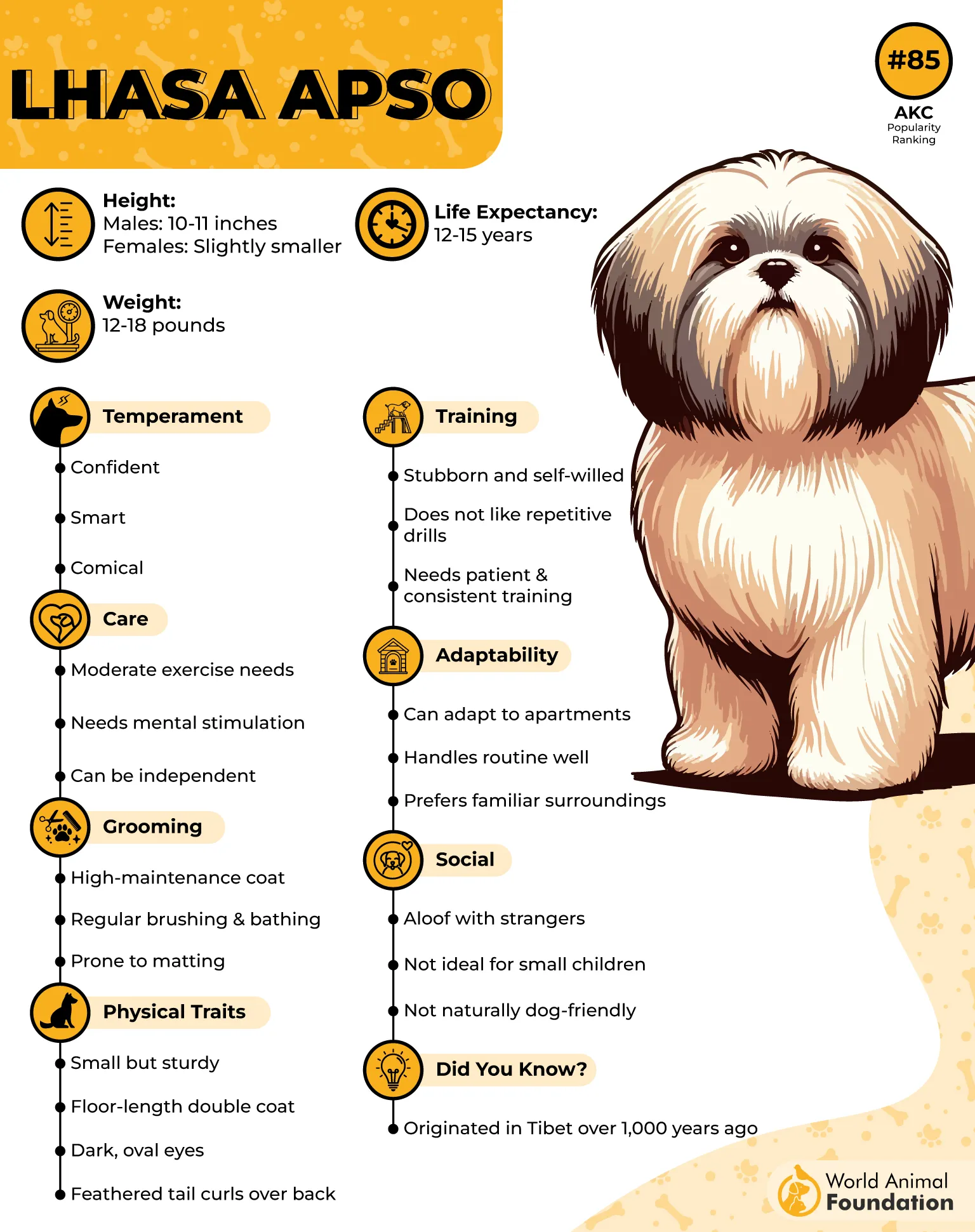
Today, Lhasa Apsos make wonderful family pets. They typically stand 10–11 inches tall, weigh between 12–18 pounds, and can live 12–15 years with proper care.
With their long, flowing coat and regal attitude, Lhasa Apsos look like they stepped out of a Himalayan fairytale. But don’t be fooled by their size — these dogs pack a lion’s heart into a pint-sized frame.
Why Lhasa Apsos Are Culturally Sacred and Seriously Cool:
Sacred temple guards with a proud history dating back over a thousand years
Small size, big personality, and even bigger loyalty
Masters of alertness — they’ll let you know if anything’s up, Tibet-style
While they may be a bit aloof with strangers at first, they are deeply affectionate and devoted to the people they know and trust. Their blend of independence and charm makes them both a loving companion and a confident little guardian.
The Lhasa Apso isn’t just a pretty face with a flowing mane — they’re steeped in centuries of cultural importance and spiritual mystique. For Tibetan monks, these dogs were considered good luck and guardians of the home’s spiritual energy. So, having a Lhasa Apso was like having your own little four-legged lucky charm.
Heads up: These little guardians love a good grooming session to keep their famous coats camera-ready. Plus, they don’t just bark for fun — every alert is meaningful, so if you’re looking for a tiny dog with a mighty job, the Lhasa Apso’s got your back.
Conclusion
Throughout history, many dog breeds sacred to cultures have held deep significance. From ancient Mesopotamia to ancient China, dogs were often regarded with reverence, sometimes even believed to guide souls or protect from evil spirits. In ancient Greece, they were often depicted in tomb art, symbolizing loyalty and life beyond death. The jackal-headed deity Anubis of Africa shows how animals resembling wolves were sacred in mythology.
In Tibetan culture, breeds with a lion-like mane were believed to guard heaven and protect livestock, while the Irish Wolfhound was considered sacred by ancient peoples for its strength and loyalty. Even in modern times, these ancient breeds continue to be honored as links to our ancestors, each a living instance of history’s deep connection between animal and human.


